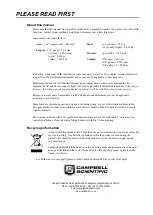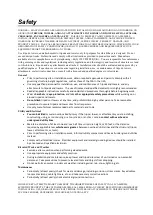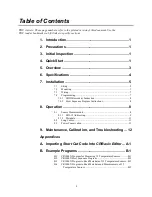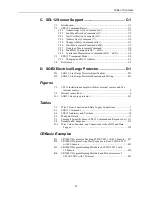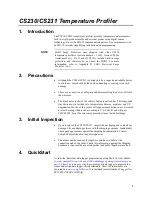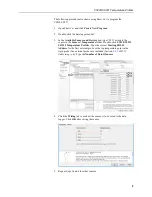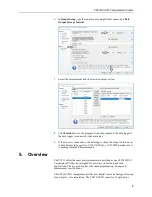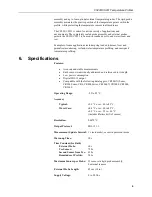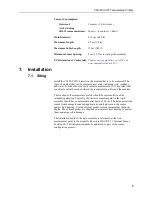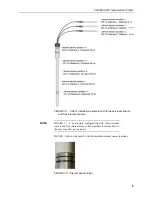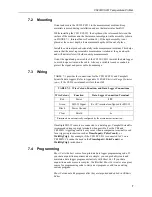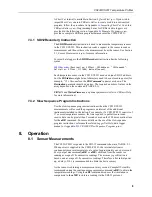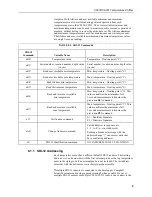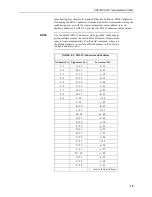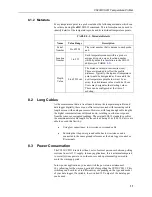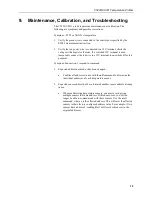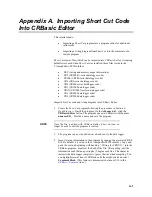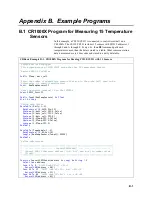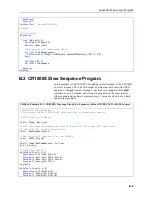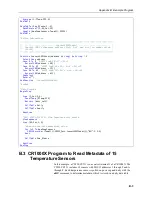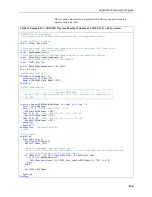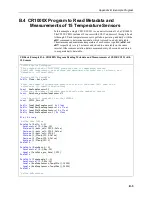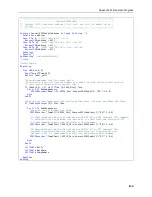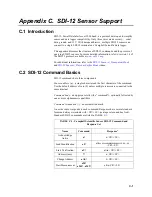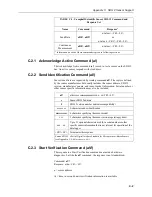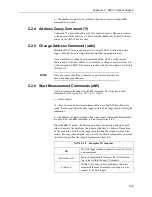
CS230/CS231 Temperature Profiler
8
A
Short Cut
tutorial is available in Section
. If you wish to
import
Short Cut
code into
CRBasic Editor
to create or add to a customized
program, follow the procedure in Appendix
(p. A-1)
. Programming basics for CRBasic data loggers are
provided in the following section. Appendix
,
provides a complete CRBasic program that measures the CS230/CS231.
7.4.1 SDI12Recorder() Instruction
The
SDI12Recorder()
instruction is used to measure the temperature sensors
in the CS230/CS231. This instruction sends a request to the sensor to make a
measurement and then retrieves the measurement from the sensor. See Section
, for more information.
For most data loggers, the
SDI12Recorder()
instruction has the following
syntax:
SDI12Recorder
(Destination, SDIPort, SDIAddress, “SDICommand”,
Multiplier, Offset, FillNAN, WaitonTimeout)
Each temperature sensor in the CS230/CS231 needs a unique SDI-12 address.
For the
SDIAddress
, alphabetical characters need to be enclosed in quotes (for
example, “A”). Also enclose the
SDICommand
in quotes as shown. The
Destination
parameter must be an array. The required number of values in the
array depends on the command (TABLE
FillNAN
and
WaitonTimeout
are optional parameters (refer to
CRBasic Help
for more information).
7.4.2 Slow Sequence Program Instructions
Use the slow sequence program instructions when the CS230/CS231
measurements will exceed the program scan interval of the additional
instruments included in the station. For example, if a CS230/CS231 consists of
17 or more temperature sensors, the time required to poll all sensors and
receive data can be greater than 5 seconds based on the 300 ms execution time
for the
aR0!
command. For more details on the use of the slow sequence
program instructions, reference the related
LoggerNet Help,
data logger
manual, or Appendix
.
8. Operation
8.1 Sensor Measurements
The CS230/CS231 responds to the SDI-12 commands shown in TABLE
When power is supplied to the CS230/CS231, the internal electronics
continuously measure temperature at a rate of approximately once per second.
Every output measurement (
aR0!
or
aM0!
) obtained from the sensor is a
running average of 10 consecutive readings. The accuracy specification is
based on an average of 10 consecutive readings. Therefore, after initial power
up, a delay of 10 s is recommended to obtain the best accuracy.
As the sensor is obtaining a measurement every second, Campbell Scientific
recommends using the continuous measurement command (
aR0!
) to obtain the
temperature readings. Using the
aR0!
commands reduces the time taken in
comparison to the
aM0!
to obtain a reading via the SDI-12 protocol.


